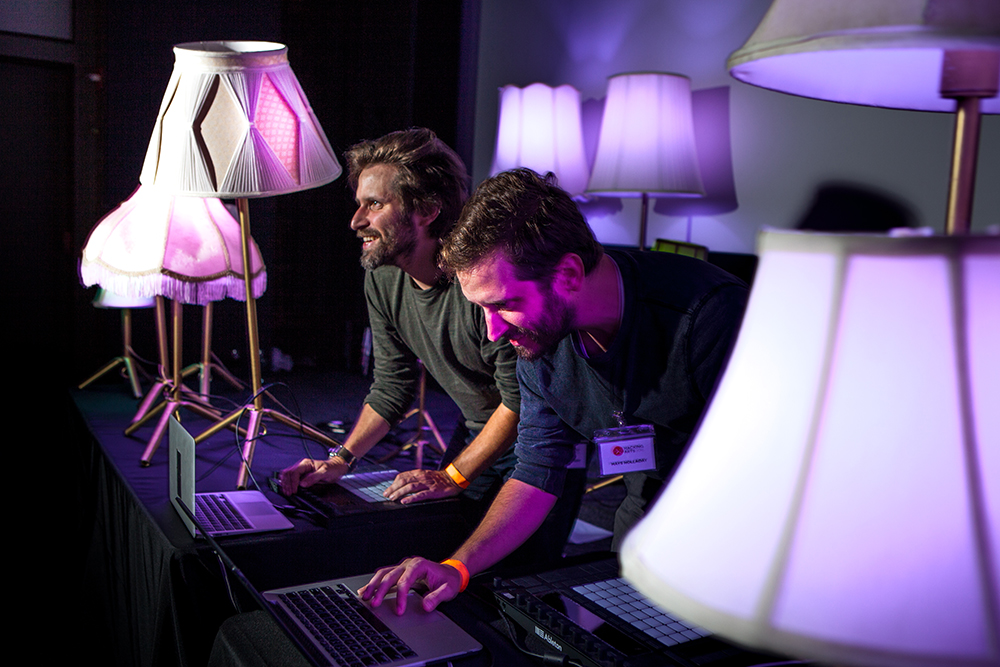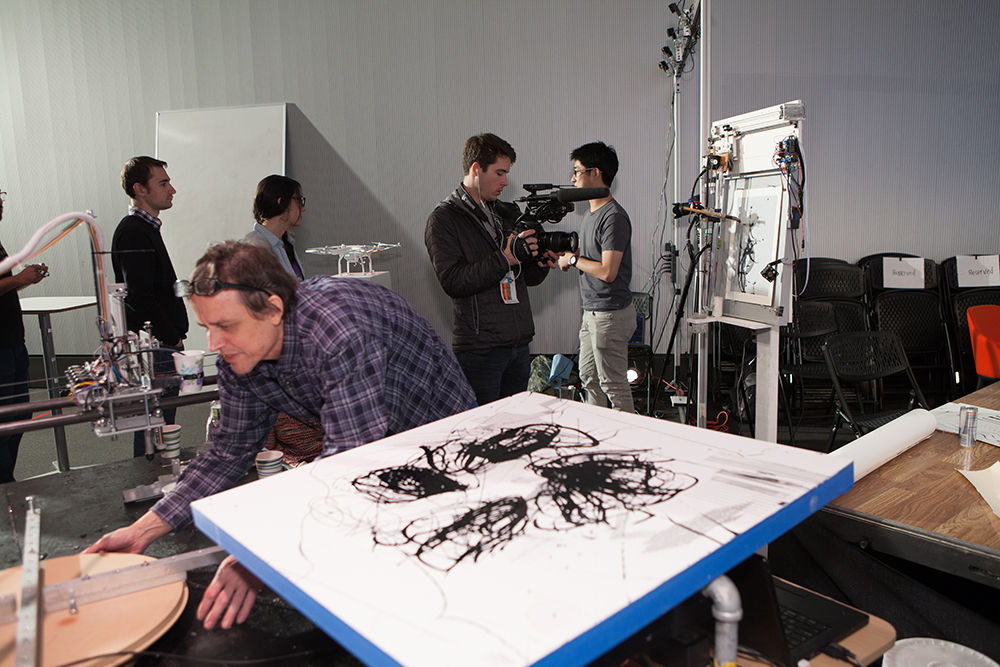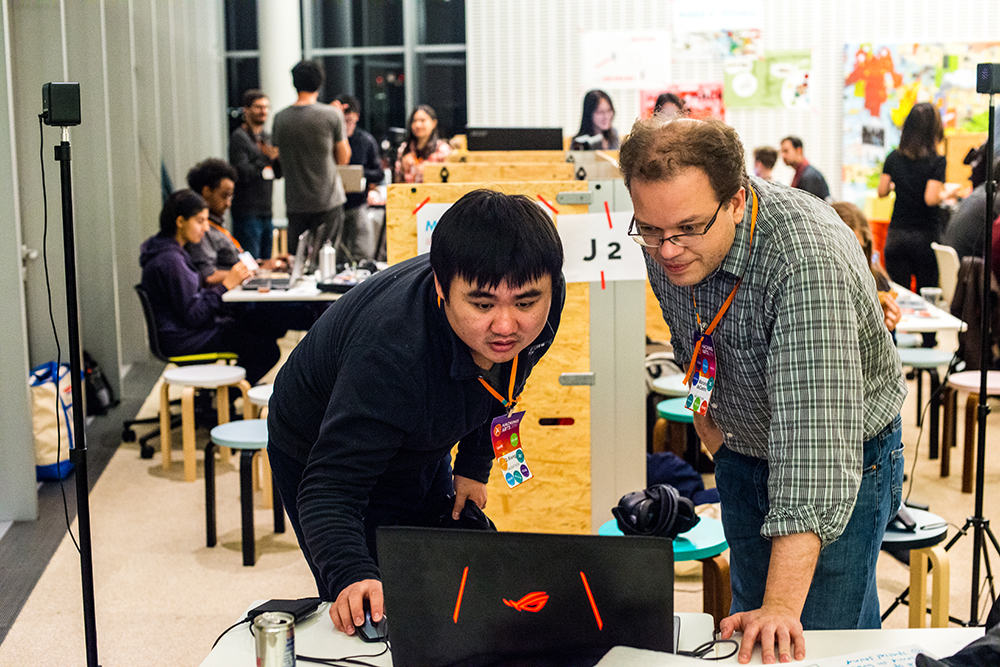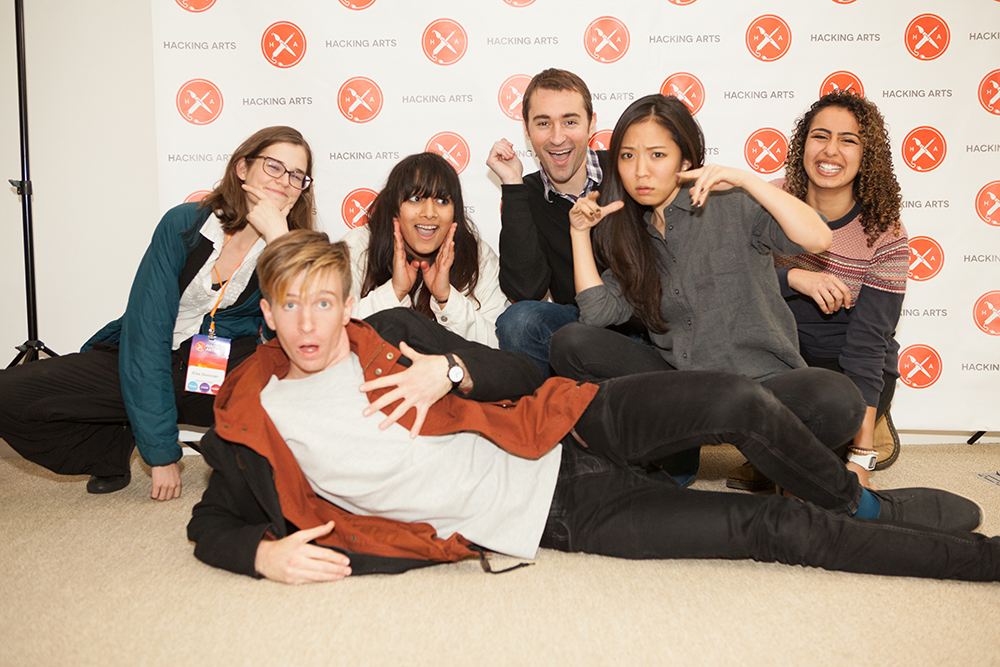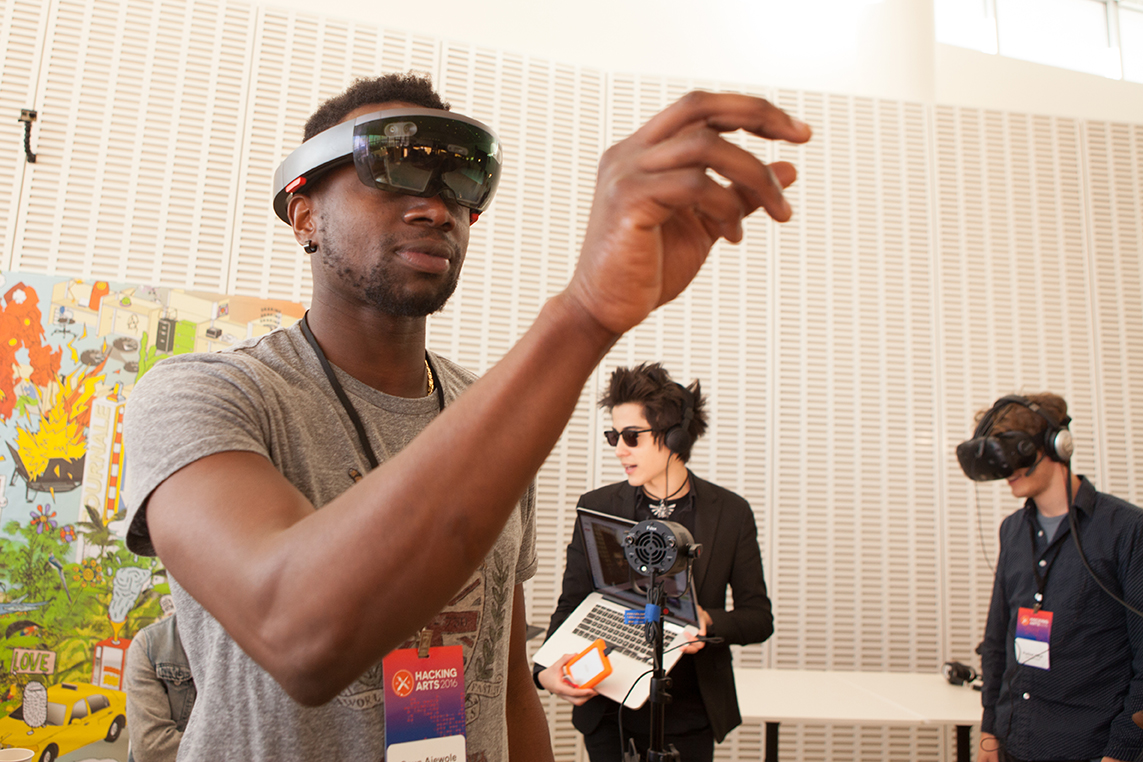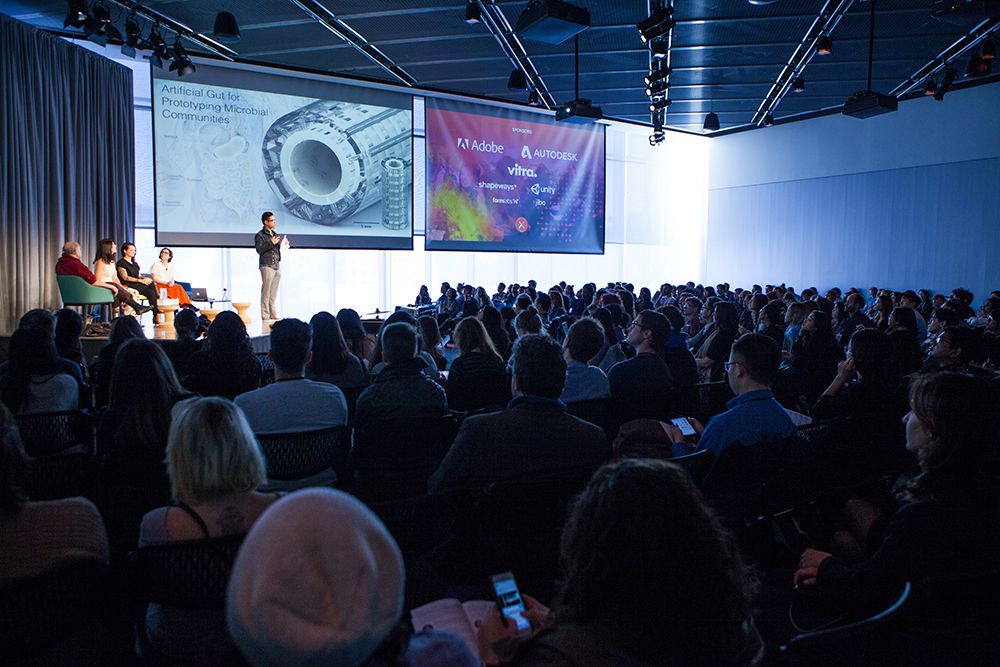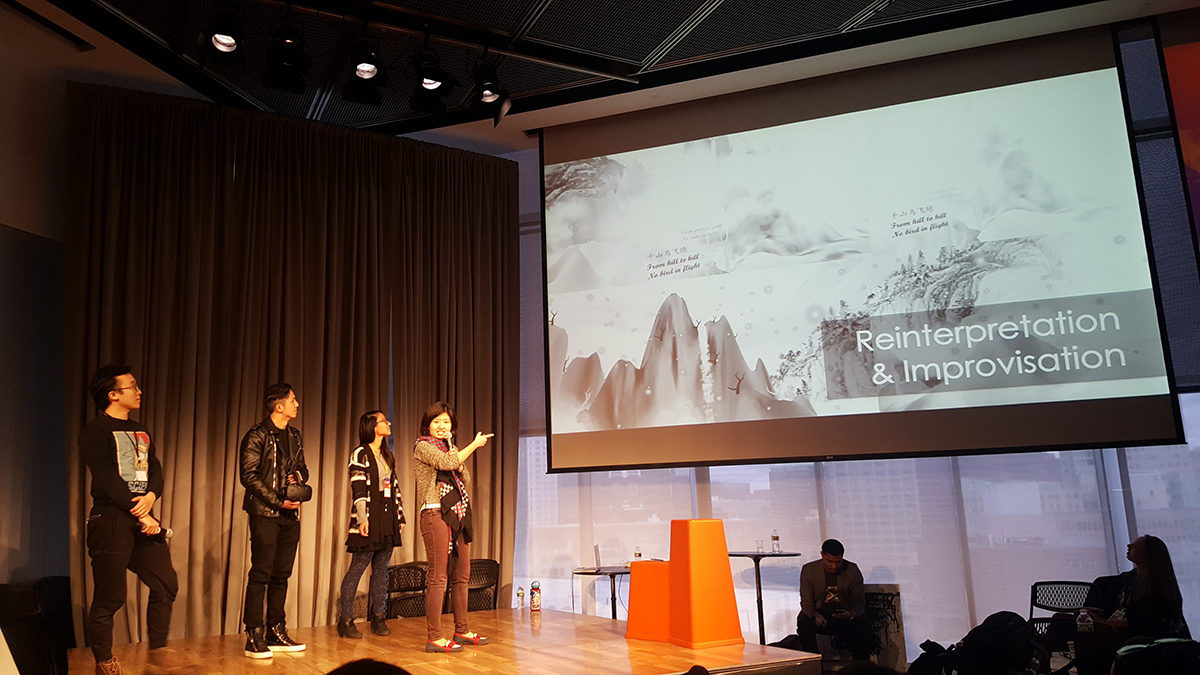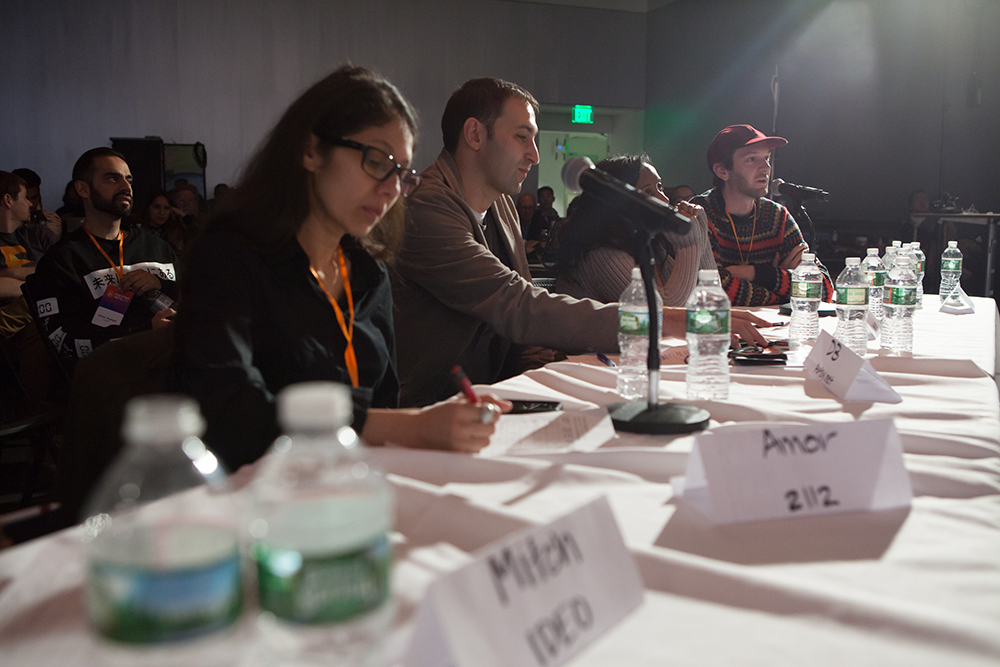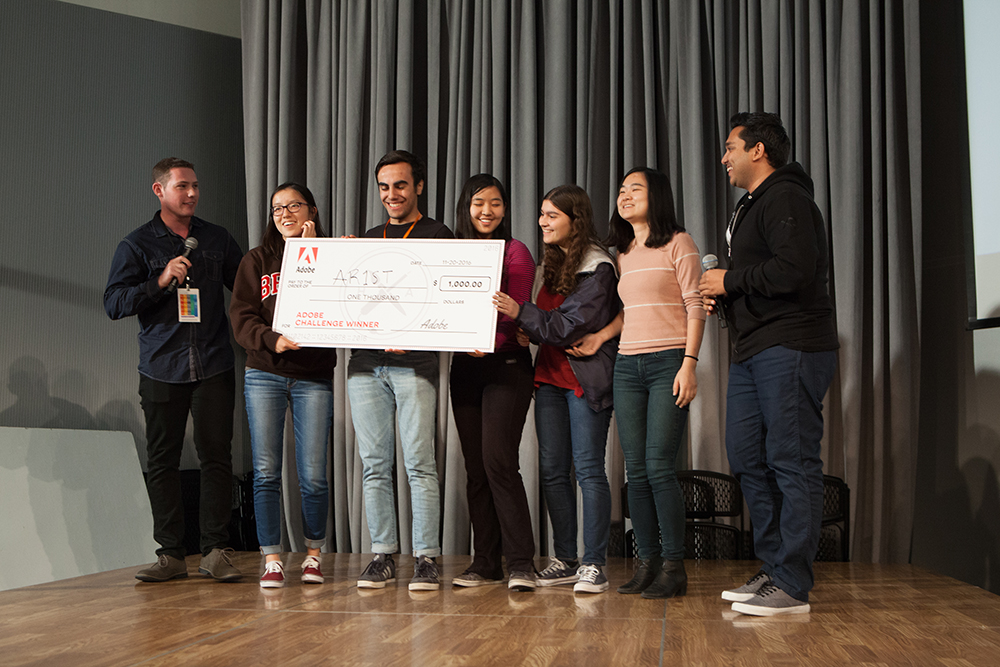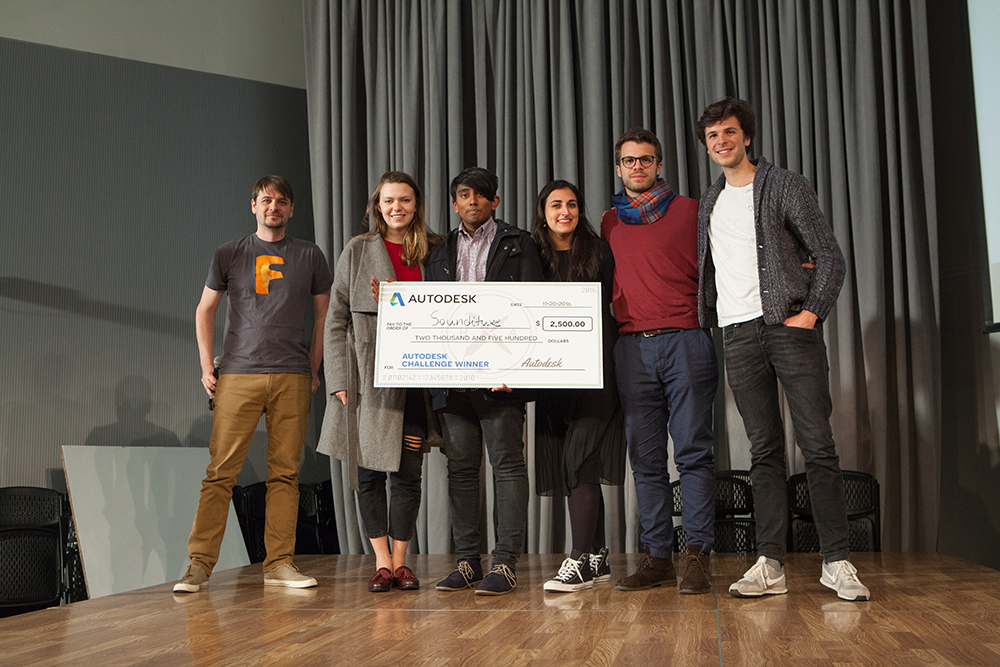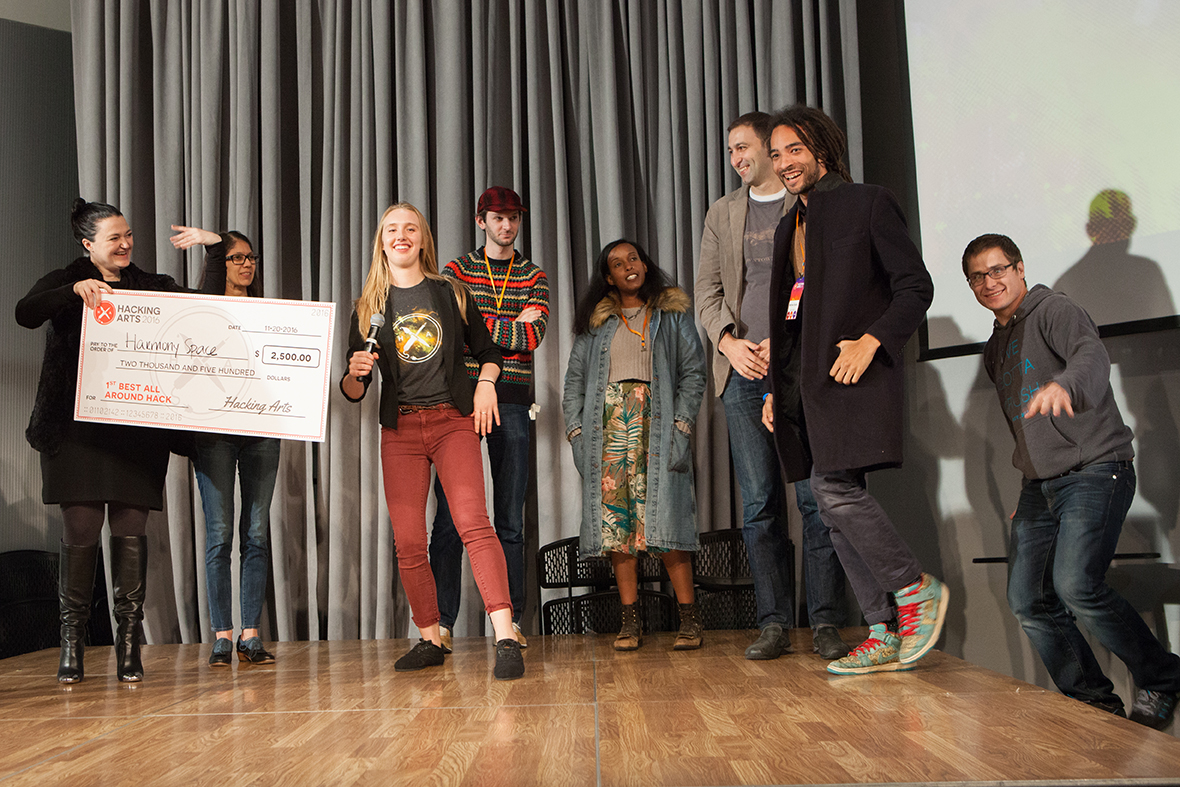“We’re not just talking about the future of the arts—we’re creating it,” says Helen Smith, MIT Sloan MBA Class of 2017 and co-chair of Hacking Arts 2016. Igniting cross-disciplinary innovation, Hacking Arts brings together artists, engineers and entrepreneurs to take on challenges at the intersection of the arts and technology.
Now in its fourth year, the 2016 Hacking Arts Festival, which took place on November 19 and 20 at MIT, featured a tech expo, a conference, augmented reality gaming, live performances and a hackathon. The numbers indicate the concentration of creative talent and the force of the collective imagination on site at the MIT Media Lab for this year’s event: 177 hackers formed 38 teams; more than 25 mentors and 5 judges gave feedback; 12 finalists pitched; 35 companies presented at the Tech Expo; 40 speakers participated in 8 panel discussions.
Winning Hacks
“Many of our hackers came in pitching ideas related to increasing empathy, particularly through augmented or virtual reality and brain-computer interfaces. We’re seeing a lot of exciting interdisciplinary mash-ups—from designing wearables to support capoeira dancers to mapping and manipulating sound in augmented reality. Virtual Reality was a big theme last year and it’s only gotten bigger, but we’re seeing much more sophisticated and exploratory work. Hackers flocked to Jibo’s SDK workshop, and Artmatr’s painting robot prototypes have really made an impact in the room; one team is working on using electrical measurements from the brain as a paintbrush,” says Smith.
The winners of the Hackathon are Harmony Space (Best All-Around Hack), Revive (First Runner-Up), möbel (Second Runner-Up), Inkfinity (Hackers’ Choice Award), ART1ST (Adobe XD Challenge) and Sounditure (Autodesk Fusion 360 Challenge).
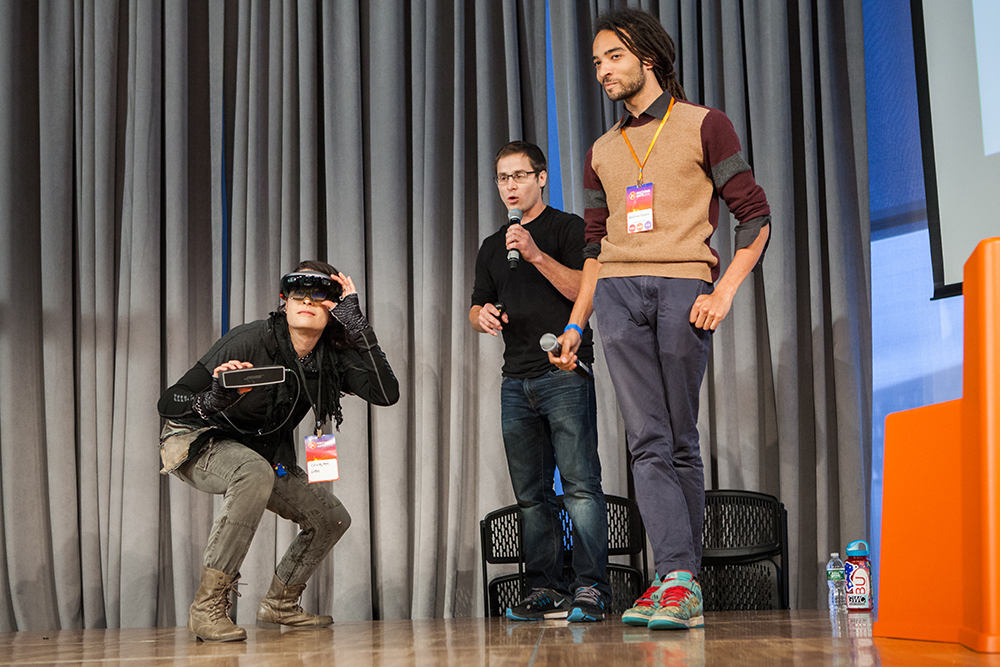
Max Harper, Matthew Seaton, and Evin Huggins of Harmony Space created an application that remaps spatial sense to auditory sense. Your position X (left,right), Y (up, down) and Z (forward, back) become pitch-shifting controllers of 3 separate musical notes, making every location in space potentially harmonic. They say, “Imagine being able to hear physical space and see harmonies. We’ve made that possible…. Never-before have we had the accessible, 3D space-tracking and augmented reality capabilities the Hololens provides. We exploit that power to visualize and auralize space.”
Revive, created by Paul Reamey, Tim Gallati, Luna Yuan, Liabao Li, Qi Xiong, and Jingchen Gao, integrates virtual reality, tactile feedback, and music to learn Tai Chi, to improve concentration and strengthen the effects of the practice. Möbel, created by Kiran Wattamwar and Christina Sun, is a social furniture project designed to provide a bonding experience through a shared struggle. The furniture, which is challenging and, as they say, “intentionally annoying” to construct, requires a minimum of two people for assembly. InkFinity, created by Sharon Yan, Yaqin Huang, Daisy Zhuo, and Lei Xia, provides a VR poetic journey inside ink paintings.

Corporate sponsors awarded prizes to two teams. ART1ST, created by Jenny Liu, Jenna Tishler, David Schurman, Ellen Jiang, and Gloria Fang, was built using Java, Android Studio and Adobe XD. This application is designed to provide users with approachable artistic experiences; it uses an algorithm based on their past preferences to select three famous paintings for them daily. Sounditure, created by Kumaran Chanthrakumar, Thomas Chardin, Leyla Novini, Jakub Florkiewicz and Alyssa Gerasimoff, uses song specific-data to shape furniture design. This platform utilizes recorded music data from the Spotify API to generate 3D furniture design in Autodesk Fusion 360 to eventually be manufactured via 3D printing.
In addition to receiving cash prizes and Shapeways vouchers, the winning teams are invited to participate in the Creative Arts Competition, a $15,000 award to support the most promising arts venture at MIT. To refine their hacks, the teams have access to specialized programming at the /START Studio, MIT’s own arts entrepreneurship incubator and maker space.
Words from the Co-chairs
The 2016 co-chairs, Helen Smith and Ric Lebre spoke with CAST about this year’s event and the future of the Hacking Arts Festival at MIT. Smith was recruited to join Hacking Arts at an MIT Sloan AdMIT weekend and first led the Performing Arts Panel in 2015. When former co-chair Natalie Pitcher asked her to consider chairing the event, Smith recalls, “that night I couldn’t fall asleep thinking about all of the things I wanted to do as co-chair.” Lebre designed the visual communications for Hacking Arts in 2015, before taking the role of co-chair in 2016. “This year,” he says, “I wanted to take a bigger role and do as much as I could.”
In your view, what is the mission of Hacking Arts, and how does it benefit the MIT student community?
HS: Our mission is to ignite innovation and entrepreneurship in the creative arts. We bring artists, engineers, technologists and entrepreneurs together to help build the future of the arts. We benefit the MIT student community by providing a place for conversation and hacking that brings together students from all courses. MIT students are always hungry to get hands-on and work with fellow students in other disciplines. We create that space.
RL: The main mission of Hacking Arts is to show students that you can be entrepreneurial and creative. You can use those two attributes for innovation. Arts is such a powerful tool for innovation. It’s only by investing in creativity that you can have amazingly designed computers or services to improve the lives of people with disabilities, for example. Hacking Arts is a way to ignite that creative spark.
What were some of you personal goals with HA this year? What did you want to achieve?
HS: Our goals were to expand our reach and diversify our participants. We are proud that we achieved those goals; we tripled the size of our tech expo and moved it to the List with 35 exhibitors; we sold out conference tickets nearly a week in advance, and hackathon applications soared to more than 700. Our hackathon attendees were nearly 60% women, 15% people of color and were about 1/3 Computer Science/EE, 1/3 Media Arts and Science and 1/3 Management, MechE, Architecture and other disciplines. Hackathons are generally not known for being diverse and inclusive or this interdisciplinary; we are really proud of what we achieved on that measure.
RL: One thing I wanted to do was to make it more relevant inside and outside MIT. If we want it to be nationally and internationally known and get more press exposure, we need awareness among students on campus, but on other campuses as well. We had people applying from Colorado, California and Florida. I was really proud of that.
What were some overall impressions? Favorite hacks? Can you describe a specific moment you witnessed that captured the spirit of Hacking Arts?
HS: Watching the hackathon pitches was really moving. People at and beyond MIT were here ready to create empathy, to solve problems and to find other people who think like them. One of my favorite moments was watching Adam Haar Horowitz, who is a TA in the Gabrieli Lab at MIT McGovern Institute for Brain Research, work to move a painting robot arm through blinking his eyes.
RL: Overall, I liked the way we combined several unique performances with time for everyone to talk and celebrate. We separated the conference and the hackathon in two different buildings, which I thought was well executed. And I liked that the tech expo was open to the public this year.
How would you like to see Hacking Arts evolve? What is essential to the event’s success in the future?
HS: Our long waiting lists for all parts of our event show the clear demand to make our events bigger. I also expect us to experiment with the content to keep evolving to support innovation in the creative arts. Recruiting a strong leadership team from both MIT Sloan and MIT Arts and Architecture is our next most important goal, as well as bringing in new partners to increase the impact we’re able to have.
RL: As we grow and have ability to absorb costs, we want to continue bringing really inspiring people. I imagine Hacking Arts being like a South by Southwest (SXSW) a few years from now, in that everybody will have heard about it and like it. I’d like for this thing, the Hacking Arts Festival, that started at MIT to become a part of the campus for a weeklong event. That would be amazing.
What do you hope the participants take away from the experience?
RL: This speaks to the core of much of what I have done. I have worked on a lot of events, from rock concerts to corporate sales conventions, and people go to events because they want to experience something that is unique. They want to feel changed by it, no matter what event they go to. I expect people who come to Hacking Arts will see what artistic expression can be—it’s not only oil paintings hanging on the wall, or some amazing classical music composition. Art should be as organic as possible, so it keeps evolving and adapting with the culture and the values of the people around. It’s an expression, often a nonverbal one, of feelings. I hope that everyone went home from Hacking Arts with a feeling that, ‘I thought that art was only a painting. Now I know it can be a bunch of LEDs blinking when someone is performing a dance movement.’ This is also artistic expression.
HS: I hope participants are fired up with new ideas and new collaborators. As for the organizers, we wouldn’t be where we are today without the tremendous support of MIT Sloan School of Management, CAST, the Media Lab and the Martin Trust Center for MIT Entrepreneurship and our other partners. We look forward to deepening and expanding those partnerships as we grow.
MIT Hacking Arts is organized by the MIT Sloan School of Management Entertainment, Media and Sports Club in collaboration with the Center for Art, Science & Technology and The Martin Trust Center for MIT Entrepreneurship.


